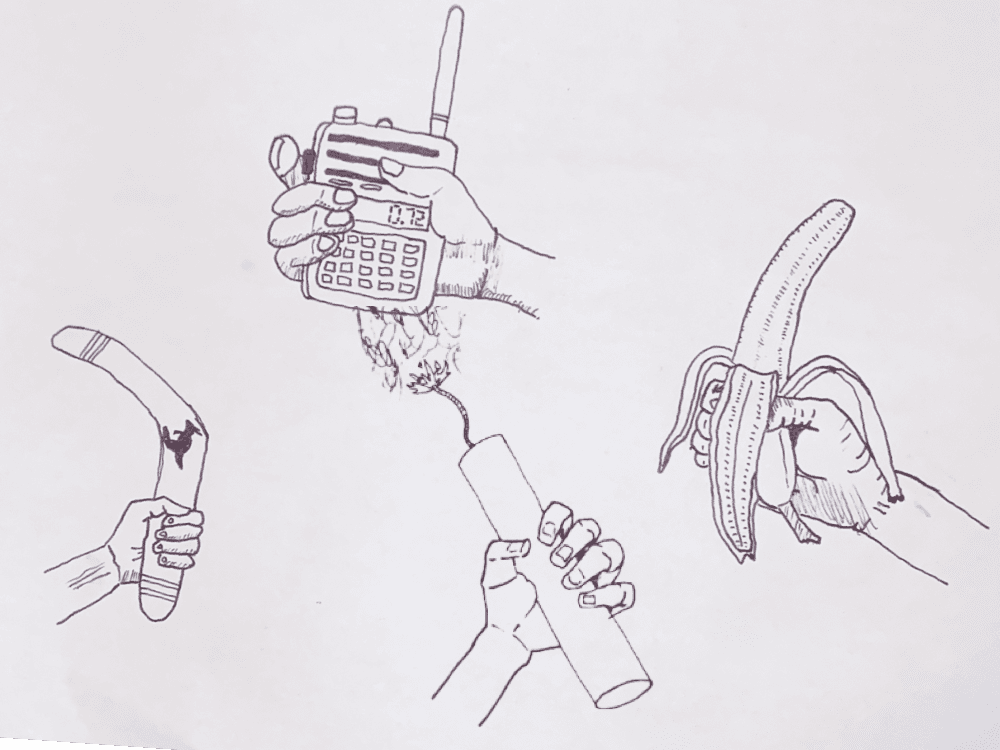
Drawing Challenge: Hands Holding Objects
Published: May 15, 2025
In this drawing challenge, I delved into some observational drawing, taking on the notoriously tricky subject of the human hand.
Hands are full of bones, joints, muscles, and tendons. They are extremely complex pieces of machinery that can be articulated in many ways.
Even Artificial Intelligence image and video generators famously have had tons of trouble with realistically depicting hands. AI is known to hallucinate bizarre monstrosities when it comes to this particular subject, struggling especially to render hands that are gesturing or holding objects (due to not understanding the context of the situation and the 3D spatial relationships).
Hands have intricate 3D structures and can appear in countless poses, making them difficult for both artists and AI to accurately replicate.
I got inspired to take this as my object of focus as part of the progression suggested in Marc Brunet’s 30 Days of Drawing video (which included the 3D maze in perspective from my last drawing challenge). His challenge was to render your own hand holding a cylindrical object (at 12:22 in the following video).
At first, I just tried to copy his example and struggled quite a bit to make hands that looked right. Like I’ve mentioned, hands are intricate structures, so my early attempts to copy his drawing could look wonky.
His only recommendation for this particular challenge in the video is breaking the hand down into simple volumes and then adding detail. This means that you break the hand down into separate simple shapes and then connect them together in more detail once you have the fundamental form down.
I think that is great advice not only for drawing, but for tackling anything that seems complex. Breaking complicated things down into simple, manageable parts reduces the overwhelming complexity. It takes a big, scary task and turns it into a series of several simplified tasks that are much more comfortable to think about and execute.
To break a hand down into simple shapes, it is helpful to learn about the basic anatomy of the hand. The following video by Draw Like a Sir gives a great overview of how to think about and draw the human hand using some basic anatomy knowledge:
The video tutorial gives you tips based on the key anatomy of the palm, fingers, thumb, joints, and tendons. By dissecting the hand into basic shapes and understanding the underlying skeletal and muscular structure, you can approach drawing hands with more confidence and achieve more believable results.
Learning some anatomy can help you pay attention to the little details of your subject. I can see why Leonardo Da Vinci got so obsessed with learning the minute details about the things he would draw and paint. Knowing how things are constructed at a fundamental level and paying attention to details (even to your own two hands) helps inform choices that make your creations feel real and natural.
In Marc's challenge, the hand is holding an abstract "cylinder". I wanted to add some visual interest so I added some different objects to the hands I drew. I decided to make the abstract cylinder a stick of dynamite. I found other reference drawings of hands holding things and also drew hands holding a walkie-talkie, a banana, and a boomerang.

I also found a reference image of several hands holding cylinders in various different poses and from different angles. Sketching these was quite difficult and some of them look seriously messed up, but it provided good practice for my observational drawing skills.

This was a tough challenge. Hands are weird. I made some wonky looking hands in the process of practicing drawing them. No wonder even AI has a hard time with them.
I’m excited to explore more figure drawing in the future. I’ve seen several books recommended by artists on Youtube such as “Figure Drawing: Design and Invention” by Michael Hampton that I think could be valuable in my journey of learning how to draw.
This challenge taught me the value in learning some of the underlying details behind the subjects I’m drawing. Learning some basic anatomy of the hand in this case helps inform the subtle details of how you draw, making your art feel more real and natural.
This was an interesting challenge that convinced me to pay more attention to the details of the things that I’m drawing, and I’m excited to do more figure and life drawing in the future.